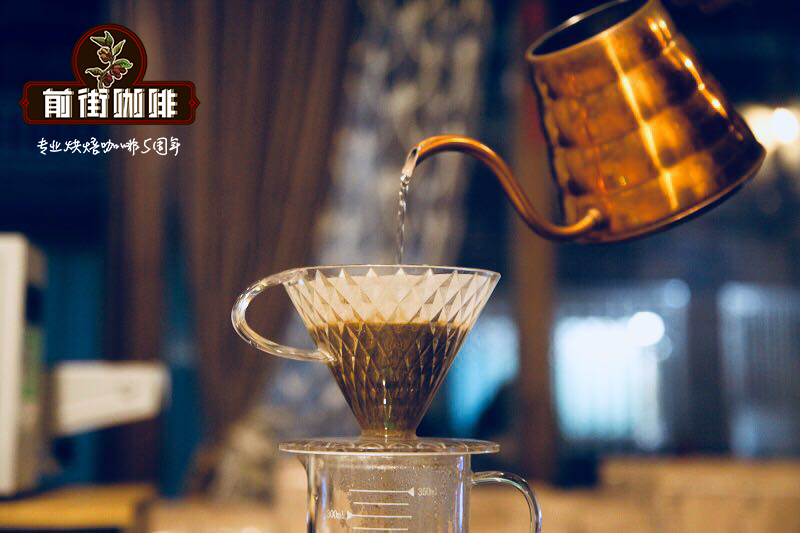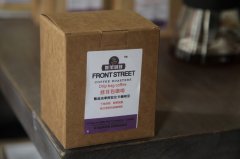Honey-treated coffee beans recommended producing area _ are Costa Rican coffee beans treated with black honey?

Professional coffee knowledge exchange more coffee bean information please follow the coffee workshop (Wechat official account cafe_style)
Costa Rica is one of the familiar coffee producing areas, and you must often see beans like XX Manor / processing Plant Honey treatment in Costa Rica.
Speaking of which, someone may raise his hand and say, "teacher, I know!" Honey treatment is the beans treated with honey!
Cough... In fact, many people are misled by the name, honey treatment is not to add honey, but in the process of processing through the pulp fermentation, and then create a molasses-like sweetness.
Strangely, we often see a color in front of the Costa Rican honey treatment, with black honey, red honey, yellow honey and white honey. What does it mean?
What kind of coffee producing area is Costa Rica, and how does it develop a powerful method of treatment?
Including the secret of honey handling the color of coffee beans, I will tell you one by one.
Costa Rican coffee beans are one of the coffee producing areas familiar to coffee drinkers. They are located in the isthmus of Central America. At the same time, they are regulated by Pacific and Atlantic currents and sea breezes. They are towering volcanoes up to 2000 meters above sea level. Coffee berries are slowly brewed in fertile volcanic ash soil and cool environment at high altitude, giving birth to coffee beans with complete and rich flavor.
At present, Costa Rica has eight main producing areas, namely: Guanacaste, West Valley, Central Valley, Turrialba, Orosi, Tres Rios, Tarrazu and Brunca. Costa Rica can be divided into two seasons each year, with the dry season from December to April, when coffee is harvested, and the wet (rainy) season from May to November.
According to ICO, Colombia can produce about 1.6 million bags of Arabica coffee a year, which is not as good as that of Central American countries such as Guatemala and Honduras, but is much higher in quality and price.
In the early days, most of the coffee beans in Costa Rica were famous for being washed. The processed coffee beans had elegant green apple acidity and clean flavor.
However, there is a great need for the use of water resources, which is not only expensive, but also has a great environmental impact.
In recent years, Costa Rica has made great efforts to develop honey treatment, and many micro-processing plants have been set up one after another.
The manor will harvest coffee beans with full maturity and good quality, in order to save water resources, use a pulper to remove the outer peel, use a scraper to adjust the scraping degree of the pulp, and place the peas with pectin on the so-called African scaffolding for sun exposure.
It is also necessary to maintain proper ventilation in the drying process, otherwise the failed honey treatment will easily have an uncomfortable smell of excessive fermentation.
.
The water consumption of honey treatment is only 5% of that of traditional washing plants, and it does not require huge sinks and exposure fields, and the investment required is relatively small.
Unlike the traditional washing method, the honey treatment method removes all the pulp first, but retains the right amount of pulp for fermentation.
In addition to effectively reducing the acidity of the coffee, it also makes the coffee taste sweeter with ripe fruit and richer sweetness on the taste, breaking away from the limitation of traditional washed coffee beans.
The sweet-smelling "honey-treated coffee" has become the target of competition in the coffee industry in recent years, and the outstanding ones have greatly enhanced the international reputation of the estates in recent years.
Many people will wonder why the honey treatment in Costa Rica has different colors.
This is the more sophisticated honey treatment developed by Costa Rica in recent years. Costa Rica has introduced many advanced machines that can control the proportion of peel and pulp removal, including white honey, yellow honey, red honey and black honey treatment. the difference between them is the amount of flesh retained.
The least flesh left is the white honey, which is closest to the washing method, leaving only about 20% of the pulp, with clean flavor and bright acidity.
Followed by yellow honey (40% pulp), red honey (60% pulp), and black honey left the most pulp, about 80%, compared with other honey treatment, it is relatively close to the sun method, sweetness is more obvious, the flavor is also more yuan.
The success or failure of this technology lies in controlling the degree of residual pulp and fermentation. The more pulp remains, the sweeter the coffee beans will be after treatment, creating a different flavor.
It seems that the longer it ferments, the better it tastes, and it's not entirely true.
Because the fermentation of honey treatment is the pulp exposed state, so the fermentation speed is much faster than the sun method, if it is not handled well, the fermentation is excessive or uneven, the flesh is rich in black honey, the flavor will be too alcoholic, the taste is very uncomfortable.
Therefore, it is indeed a great knowledge to choose what kind of pulp proportion to use, but also depends on the flavor of the coffee fruit and the fermentation control technology of the processing plant.
In recent years, the development of the world of Costa Rican honey treatment has also made many estates shine internationally, bringing more foreign exchange to Costa Rica and enabling coffee farmers to make better profits. it also makes the impression of Costa Rican coffee more impressive, please climb another tall building.
In recent years, more and more countries have followed the example of Costa Rican honey treatment, and people are becoming more and more blessed.
Brand recommendation of honey treated coffee beans
The Costa Rican black honey-treated coffee beans roasted on Qianjie Coffee are fully guaranteed both in brand and quality. And more importantly, the performance-to-price ratio is extremely high, a pack of half a pound 227 grams, the price is only about 95 yuan. According to the calculation of 15 powders per cup of coffee, 15 cups of coffee can be made in a bag, which costs only about 6 yuan per cup, which is very cost-effective for coffee shops to sell dozens of yuan a cup.
Qianjie coffee: Guangzhou bakery, the store is small but a variety of beans, you can find a variety of unknown beans, but also provide online store services. Https://shop104210103.taobao.com
Important Notice :
前街咖啡 FrontStreet Coffee has moved to new addredd:
FrontStreet Coffee Address: 315,Donghua East Road,GuangZhou
Tel:020 38364473
- Prev

Coffee honey treatment video _ coffee bean honey treatment suitable for brewing coffee _ honey treatment coffee price
Professional coffee knowledge exchange more information about coffee beans Please follow the coffee workshop (Wechat official account cafe_style) Coffee treatment, which refers to the process by which coffee fruit turns into raw coffee beans (seeds). Generally speaking, there are three kinds of treatment, which are: sun washing, which is between sun washing and water washing, including semi-washing (wet planing) and peeling in Brazil.
- Next

Filter hanging coffee how to make filter hanging coffee brewing process filter hanging coffee can be used several times
Professional coffee knowledge exchange more coffee bean information Please follow the coffee workshop (Wechat official account cafe_style) people who have never tried individual coffee may be afraid that the coffee is too bitter, if this is the case, you might as well try the filter hanging coffee bar, the filter hanging coffee is convenient to brew, and most of the flavor is balanced, if you want to try black coffee, you can also try it.
Related
- What is the meaning of lactic acid fermentation with coffee bean treatment?
- How to judge the state of foam by sound?
- How does the latte pull out the unicorn pattern? Come to get for a little trick to improve the flower pull!
- Will flower pulling affect the taste of the latte?
- Do you know the history of coffee?
- The difference between honey treatment and sun washing what is raisin honey treatment?
- What kind of milk can a novice use to make coffee foam to keep the foam longer? The correct method and skills of milking tutorial sharing
- Why do washed coffee beans taste sour? Flavor characteristics of washed Coffee
- Introduction to the skill of how to practice the size and height of water injection around the circle of hand-brewed coffee
- How do beginners practice coffee flower drawing from scratch?

